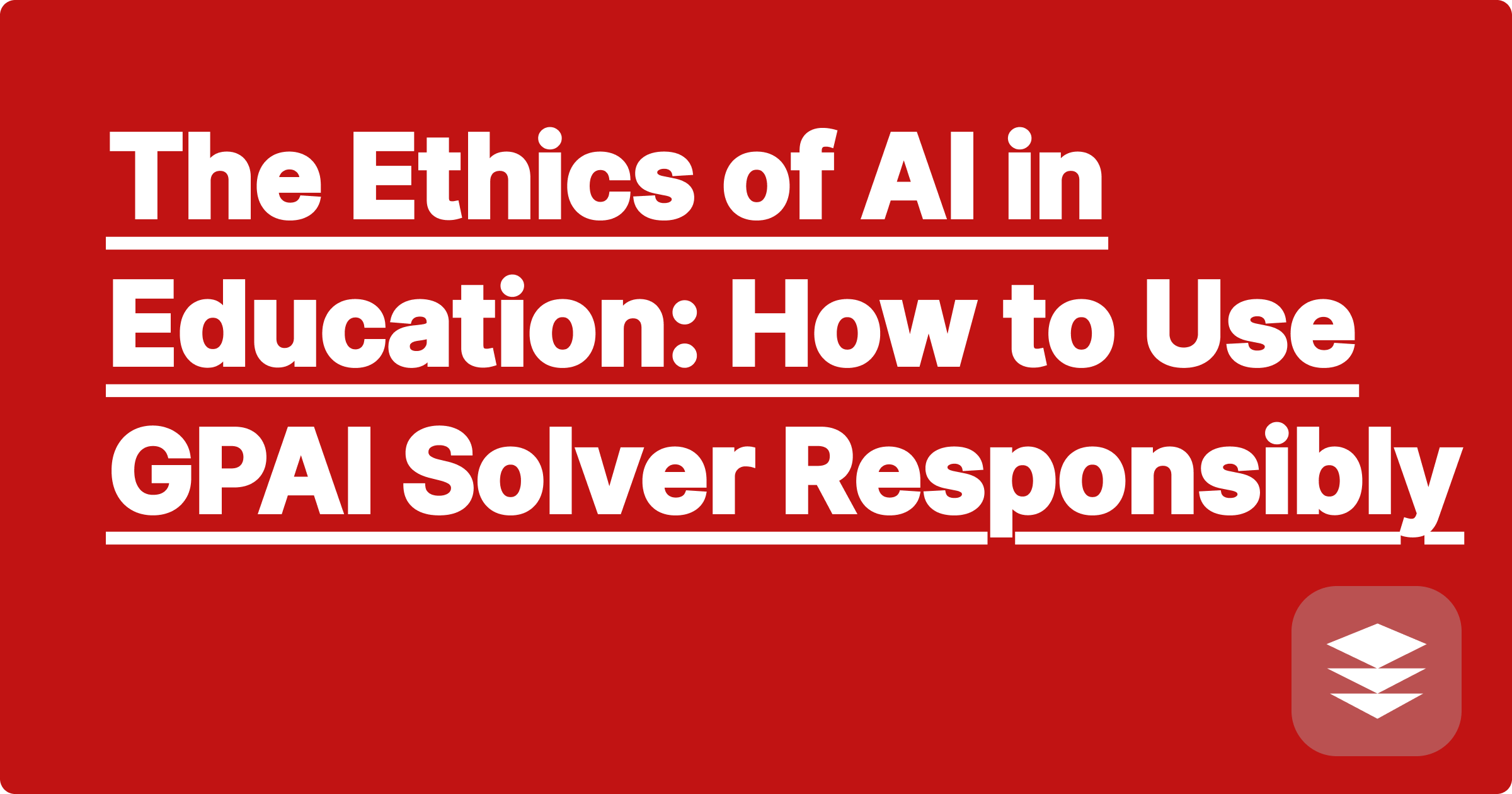
AI tools are everywhere, and they've changed the academic landscape forever. For students, they offer incredible power: instant answers, detailed explanations, and 24/7 support. But with this power comes a critical question that keeps many students up at night: Am I cheating?
The line between using a tool for help and violating your school's academic integrity policy can feel blurry. But it doesn't have to be. The ethical use of AI in school isn't about avoiding these powerful tools; it's about using them with intention, integrity, and a clear focus on one thing: learning.
This guide will provide a clear framework for using AI assistants like GPAI Solver responsibly, helping you leverage their power for genuine academic growth, not for taking shortcuts.
Let's establish the fundamental principle first. The purpose of your education is to build understanding and develop problem-solving skills. Any tool that helps you do that is a learning aid. Any tool you use to bypass that process is a crutch.
Here’s a simple litmus test to determine if you are using AI for learning, not cheating:
The difference isn't in the tool; it's in your intent.
Using AI responsibly means integrating it into your study workflow as a partner, not a replacement for your own brain. Here’s a practical, three-step framework.
This is non-negotiable for ethical use. Before you even think about opening an AI tool, engage with the problem on your own.
This initial struggle is where real learning happens. It primes your brain to recognize the solution when you see it and understand why your initial approach was wrong.
Once you've made a genuine effort, you can turn to GPAI Solver with a clear, learning-oriented goal.
[Image: A student looking at their own handwritten notes on one side of the screen, and the GPAI Solver's "Step-by-Step" solution on the other side, comparing the two. Alt-text: A student making ethical use of AI in school by comparing their work to an AI's solution.]
This is the final and most important step. After using the AI to understand the correct process, close the tool and re-write the solution from scratch in your own words.
This step proves two things:
"An AI can give you an answer, but it can't give you understanding. GPAI Solver is designed to bridge that gap, showing you the 'how' so you can master the 'why'."
Q1: What if my professor has a strict "no AI" policy?
A: Always respect your professor's specific syllabus rules. However, many "no AI" policies are aimed at preventing plagiarism and the use of AI to write essays or generate answers without effort. Using a tool like GPAI to check your math homework or to understand the steps of a problem you already attempted often falls into a different category, similar to using a calculator. If you're unsure, ask your professor for clarification: "Is it acceptable to use a tool to verify my answers after I've completed the work myself?"
Q2: Will using AI tools make me lazy or hurt my learning in the long run?
A: It all comes down to how you use them. If you use AI as a shortcut, it will absolutely hinder your learning. But if you follow the framework above—attempt, verify, and re-articulate—it becomes an incredibly efficient study tool that can accelerate your learning by providing instant feedback.
Q3: How is GPAI Solver designed for responsible use?
A: GPAI Solver was created with this exact ethical dilemma in mind. The "Step-by-Step" mode is purely for learning. The "Humanizing" mode helps you understand how to communicate complex ideas naturally. We encourage all users to use the platform as a tool to augment their intelligence, not replace it.
The conversation around the ethical use of AI in school is evolving, but the principles of hard work and genuine learning remain constant. By using tools like GPAI Solver as a responsible partner in your education, you can not only get better grades but also build a deeper, more resilient understanding of your subject matter.
Ready to learn smarter, not just faster?
[Try GPAI Solver today and discover the ethical way to use AI as your personal tutor. Sign up now for 100 free credits.]
Image to Text Math: Digitize Notes with an AI Equation OCR | GPAI Solver
Using an AI Practice Problem Generator for Your Next Exam | GPAI Solver
The Ethics of AI in Education: How to Use GPAI Solver Responsibly
The Ultimate Open-Book Exam Strategy: Build a 'Second Brain' with AI
My Professor's 100-Slide PowerPoint, Now a 2-Page Cheatsheet
How to Create a Personalized Formula Sheet for Your Physics Final
I Didn't Take Any Notes: How to Create a Study Guide from a Textbook
The Art of the 'Knowledge Block': Why Building Your Cheatsheet is Better
How AI Can Identify Key Concepts from Your Lecture Recordings
Compare & Contrast: Using AI to Create Cheatsheets for Different Subjects